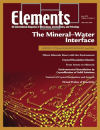
3 Goldschmidt deadlines on 25 June
We would like to remind you that on 25 June is the deadline for:
EAG, GS and GSJ members benefit from reduced registration rates. For any enquiry about your EAG membership, please contact the EAG Office.

We would like to remind you that on 25 June is the deadline for:
EAG, GS and GSJ members benefit from reduced registration rates. For any enquiry about your EAG membership, please contact the EAG Office.

The EAG, through the Goldschmidt2013 systems, has made almost 100 grants to help delegates attend the meeting in Florence. Of these, about half were made to delegates from low-income countries, and consisted of the waiving of registration fees together with a sum of 500 Euros to help with travel and other expenses. The other grants were all made to students, again largely from countries that could not normally be expected to find funds to send students to an international conference. These grants consisted of the waiving of the registration fee.

Guest Editors Christine Putnis and Encarnacion Ruiz-Agudo have chosen to focus on reactions occurring at mineral–water interfaces, which are central to geochemical processes. They affect a wide range of important environmental issues, such as the composition of natural waters, weathering and soil formation, element cycling, biomineralization, acid mine drainage, and nuclear waste disposal. Through the continuing development of advanced analytical methods, such as atomic force microscopy (AFM), direct observations of mineral reactions at the nanoscale have enabled exciting new possibilities for clarifying mechanisms governing mineral–fluid reactions. Observations have been complemented, as a result of greatly improved computing capabilities, by molecular simulations to confirm or predict experimental results. The cover image illustrates a model simulation of a dissolving crystal surface.

The June 2013 issue of Elements marks the completion of 50 thematic issues. Thanks to the principal editors, guest editors, authors and society news editors who have contributed to Elements since the idea for a multi-society magazine was first put forward by Rod Ewing. Thanks to the readers for subscribing, and citing Elements in your papers. Since its first issue in January 2005, circulation has grown from 8,000 subscribers to more than 16,000 subscribers per issue and the number of Participating Societies has grown as well, from the 5 founding societies to 17 participating and 3 affiliated societies. Elements 5-year impact factor sits at a very respectable 3.85.
As we take this moment to look back, we also want to look ahead. You can help us by completing this simple 7-question survey. Responses are anonymous and will be collected through 28 June 2013.

The July issue of Geochemical Perspectives "Noble gas constraints on the origin and evolution of Earth’s volatiles", written by Manuel Moreira, is currently being prepared. You can review the abstract here.
If you are not yet an EAG member and wish to subscribe to the journal to receive printed copies, please join before the end of June.

Mars' atmosphere could have been rich in oxygen four billion years ago - well before the rise of oxygen in Earth's atmosphere. That is the suggestion put forward by Prof. Bernard Wood (University of Oxford & EAG Goldschmidt Officer), author of a study in the Nature journal, which outlines an explanation for differences between Mars meteorites and rocks examined by NASA’s Spirit rover. Read more

A new agent of the United Nations Geochemical Organisation (UNGO) brings a vital message to the research team...
"To the limits..." brings a humorous look at the current world of science from a geochemist point of view.

Receive job ads as they are posted: like us on Facebook or follow us on Twitter (@EAG_). Post a position on the EAG job page (free of charge): send the details to EAG Office.
More jobs at www.eag.eu.com/jobs.
Thank you for your attention
